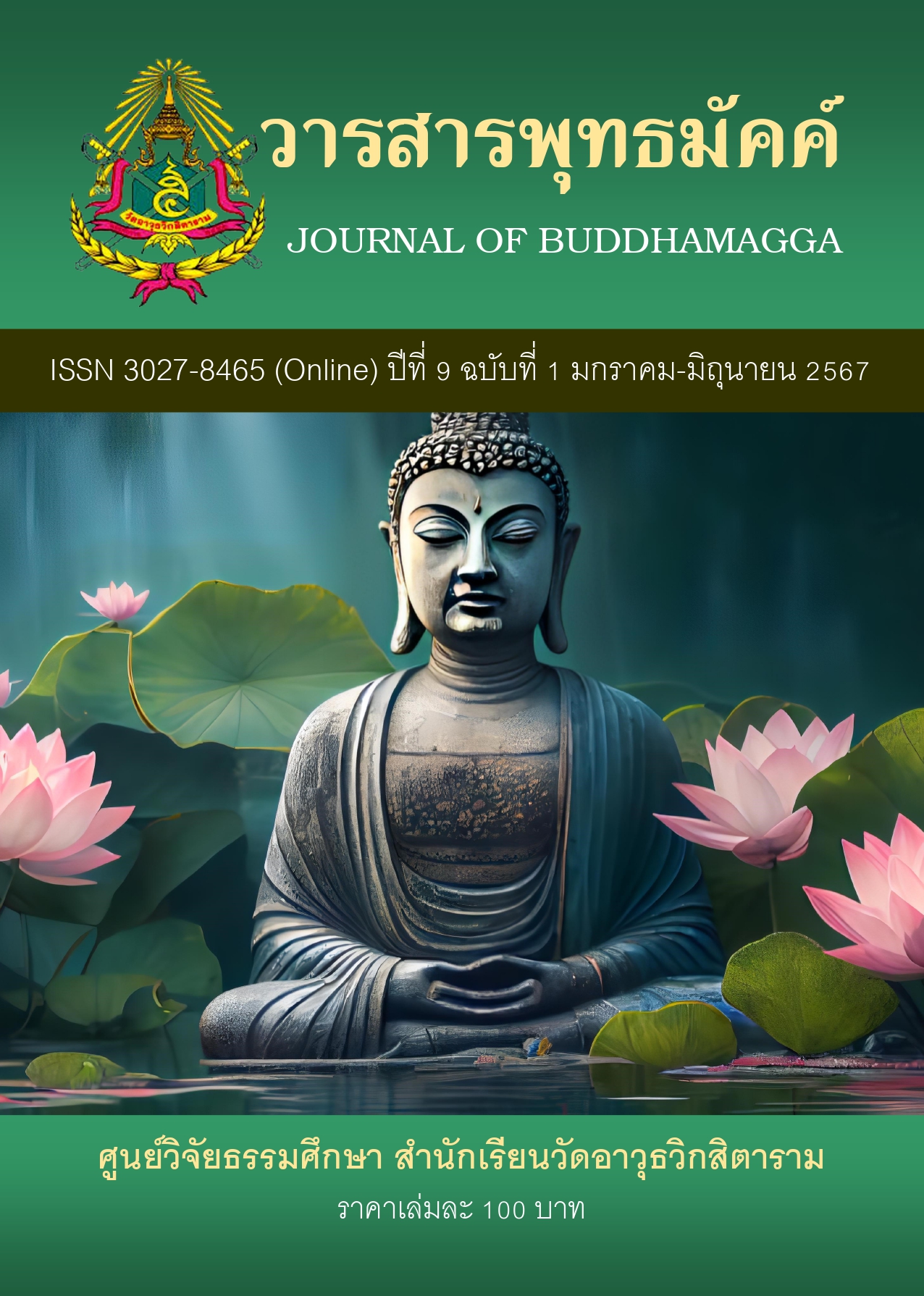Context of Education 4.0 Affecting Teachers’ Leadership in Art Design Major in Guangzhou City under Guangdong Province
คำสำคัญ:
Guangdong Province, Education 4.0, Teachers’ Leadership, Art Design Major in Guangzhou Cityบทคัดย่อ
The objectives of the research were: (1) to examine the components of context of education 4.0 in Guangzhou City under Guangdong Province; (2) to examine the components of teachers’ leadership in art design major in Guangzhou City under Guangdong Province; (3) to investigate the context of education 4.0 affecting the teachers’ leadership in art design major in Guangzhou City under Guangdong Province.
The research employed a mixed research methodology, encompassing both quantitative research and qualitative research, to gather data from a sample of 356 instructors and administrators in art design major across 20 universities in Guangzhou City under Guangdong Province, the People's Republic of China. The sample was selected using a stratified random sampling technique based on Krejcie and Morgan's Table (1970). Additionally, seven key informants with extensive experience in management and teaching were purposively sampled to obtain specific information. The research instruments included semi-structured interview forms and a five-point rating scale questionnaire. Statistics such as Exploratory Factor Analysis and Multiple Regression Analysis were applied for data analysis.
Findings indicated that: (1) Education 4.0 in Guangzhou under Guangdong Province encompassed four fundamental components, namely: technology integration and innovative teaching, personalized learning, lifelong learning, and data-driven instructional decisions; (2) teachers’ leadership in art design major in Guangzhou City under Guangdong Province comprised six essential elements including mission vision, innovative teaching, professional development, collaborative teamwork, encouragement and motivation, and reflection and improvement; and (3) research indicated that the explanatory degree of the selected independent variable reached 57%, so it was considered that the explanatory degree of the selected independent variable was high.
เอกสารอ้างอิง
Carvalho, T., & Santiago, R. (2016). Professionalism, managerialism and reform in higher education and the health services: The European welfare state and the rise of the knowledge society: Springer.
DuFour, R., & Marzano, R. J. (2011). Leaders of learning: How district, school, and classroom leaders improve student achievement: Solution Tree Press.
Elmore, R. F. (2000). Building a new structure for school leadership. Albert Shanker Institute.
Fullan, M. (2014). The principal 2.0: Three keys to maximizing impact: John Wiley & Sons.
Hargreaves, A., & Fink, D. (2012). Sustainable leadership: John Wiley & Sons.
J.Miranda et al.(2021). The core components of education 4.0 in higher education: Three case studies in engineering education. [J].107-278.
Schwab, K. (2016). The Fourth Industrial Revolution. World Economic Forum.
Sergiovanni, T. (1992). Moral leadership: Getting to the heart of school improvement Jossey. In: Bass Publishers.
Sergiovanni, T. (1996). Leadership for the schoolhouse: How is it different? Why is it important? : ERIC.
United Nations Educational, Scientific and Cultural Organization. (2021). Education for sustainable development: a roadmap.
Xi, J. (2023). Strengthening the foundation of the country's wealth and power with the strength of education -- General Secretary Xi Jinping's important speech at the fifth collective study session of the Political Bureau of the CPC Central Committee points out the direction of the construction of a strong education nation. Retrieved from https://www.gov.cn/yaowen/liebiao/202305/content_6883868.htm
เผยแพร่แล้ว
รูปแบบการอ้างอิง
ฉบับ
ประเภทบทความ
สัญญาอนุญาต
ลิขสิทธิ์ (c) 2024 พุทธมัคค์

อนุญาตภายใต้เงื่อนไข Creative Commons Attribution-NonCommercial-NoDerivatives 4.0 International License.



